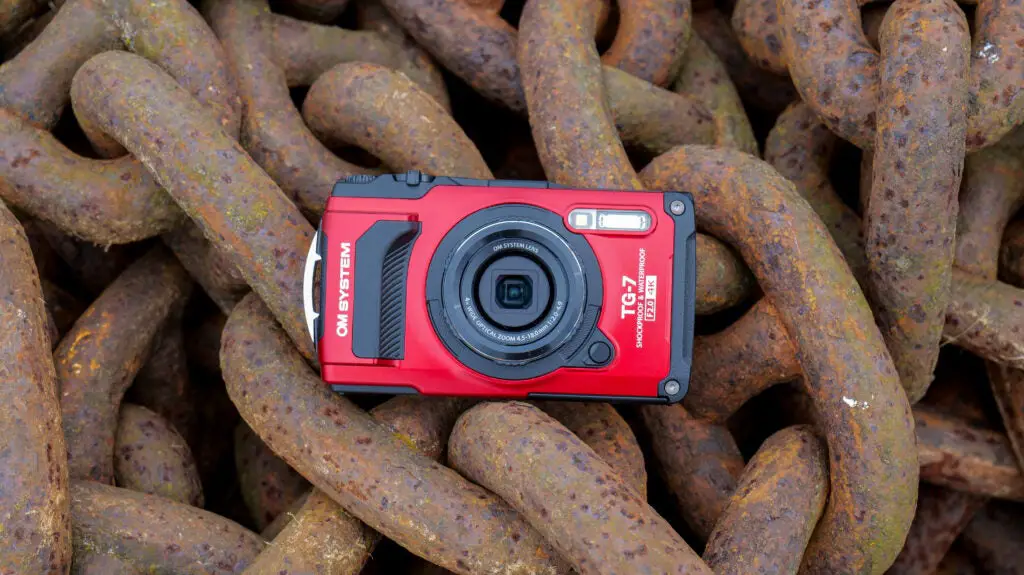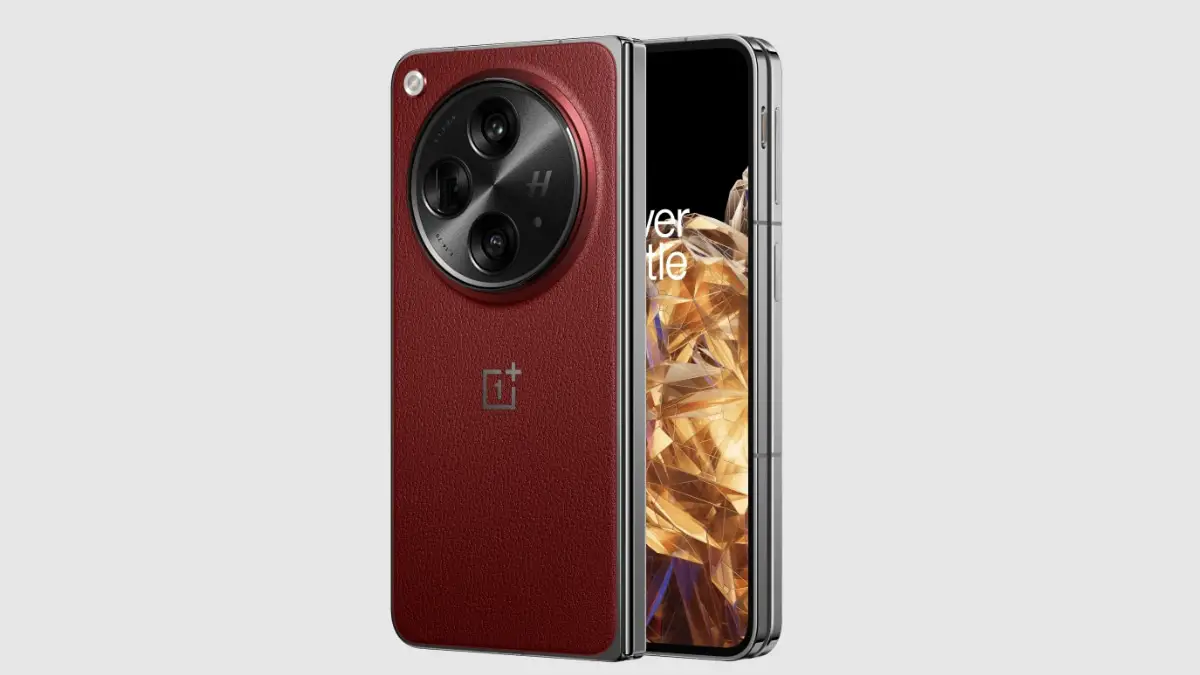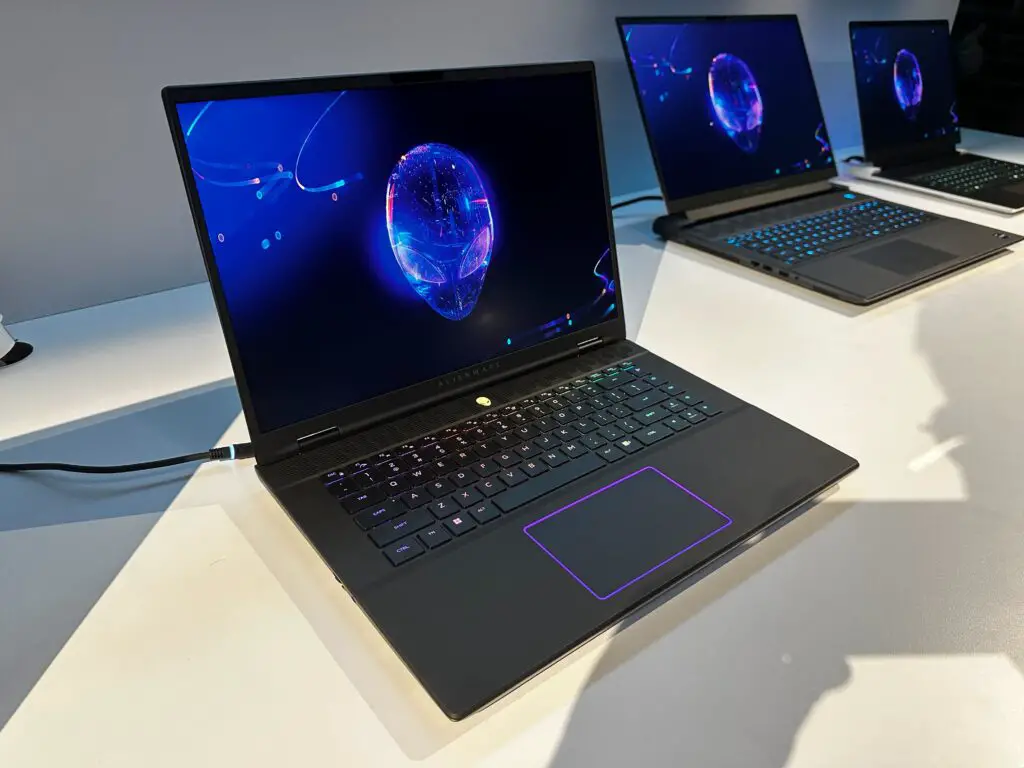Verdict
The OM System Tough TG-7 is never going to beat even an entry-level mirrorless camera on image performance (although its macro shooting is fantastic), but its durable and waterproof design means it can operate in places and situations that would destroy most electronic devices. Its package of sensors, meanwhile, will appeal to travellers who want to keep detailed records of their exploits.
Pros
- Compact and extremely rugged
- Impressive macro mode
Cons
- Small buttons
- GPS drains battery life quickly
Key Features
- Rugged buildShockproof, crushproof, freezeproof and waterproof to 15m
- GPS built-inLocation tracking, plus compass, thermometer and manometer sensors
- 12MP 1/2.33-inch CMOS sensorSupports RAW capture and C4K video
- F2.0 lensWith 4x optical zoom and anti-fog design
Introduction
Thanks to smartphones, the pocket-size compact camera market has all but died out over the past ten years or so. One point-and-shoot enclave, however, has held out resolutely: the rugged camera. Nigh-on indestructible, these compacts can go to places your iPhone won’t – and take photos there.
Perhaps the best-known rugged compact range around, Olympus’ (now OM Systems’) Tough series is now on its seventh iteration.
At a shade under £500/$500 its latest model, the Tough TG-7, isn’t cheap but it promises 4K video and high-quality photos alongside build quality that’ll survive your wildest outdoor adventures – or even just your day job on a building site.
Let’s find out if the OM System Tough TG-7 can live up to its name.
Design
- 113.9 x 32.7 x 65.8mm and 249g
- IP68-rated build quality
- 3-inch non-touch screen
For a rugged camera, the TG-7 looks the part. With its visible screws, sharp angles and chunky hand grip, it’s like the photography equivalent of a Casio G-Shock watch. My review sample came in a bright red metallic finish, and this striking colourway isn’t just a style thing – it also makes the camera easier to see if dropped in a forest, snowfield or ocean.
I generally use my review samples carefully, and while I was never going to throw the TG-7 around to put its claims of near-invincibility to the test, I certainly didn’t treat it with kid gloves. And, after a week of use during which it was dunked in the sea, dumped into a backpack alongside other items and generally battered around, I’m happy to report that it looks and works exactly the same as when it came out of its box.
The camera is IP68 rated, which means it’s totally protected against dust ingress (the ‘6’ part of the rating) and suitable for permanent submersion in water (the ‘8’); OM System says the TG-7 can be taken to a depth of 15m (50ft) without additional protection. One thing you need to ensure (and the camera helpfully reminds you to do it, too) is that the seals on the double-locking battery and connection doors are free of sand or similar objects when you close them.
It’s also freezeproof to -10ºC, shockproof against drops of up to 2.1m and crushproof against loads of up to 100kg. Additionally, the dual layer of glass protecting the lens ensures that it doesn’t get fogged up if you abruptly move from one temperature extreme to another.
It’s also lightweight and pocketable and still manages to have a pretty full-on array of physical controls available on the outside. I will say that many of the buttons and dials are quite small, which may not suit users wearing gloves, but the zoom rocker and shutter button are easy to find and use – even in the dark or underwater.
There’s a pretty standard-looking 3-inch screen on the back, but unlike on most cameras these days, it’s not a touchscreen – possibly due to the thick layer of protective glass that sits on top of it.
I should also mention the huge range of accessories that OM System offers for the TG-7. These range from simple silicone cases that add extra protection, to lens teleconverters and macro lights, to a full-on dive case that lets you take the camera 45m below sea level. This large, supportive ecosystem feels like ample proof that the manufacturer takes the TG-7 seriously, and can seriously expand its capabilities.
Features and Performance
- ‘Field sensor’ package
- 300-shot battery life
Speaking of capabilities, there’s more to the TG-7’s adventurousness than its rugged build. It also comes with a suite of integrated field sensors that allow it to embed photos and videos with highly detailed location data.
Not only is there built-in GPS, but a compass, thermometer and manometer (an atmospheric pressure gauge, used for determining altitude), so that when you look back on your shots in years to come, you’ll truly be able to see what was going on when you took them.
A ‘log’ switch on top of the camera can be used to quickly turn off the sensors, and I realised, to my cost, that it’ll continuously be recording location data if switched on – even if the camera itself isn’t being used. This will drain the battery surprisingly quickly, so it’s worth keeping it turned off unless you really, really need it.
With the logging turned off, battery life is much more reasonable. OM System claims you can take around 300 photos on a full charge, and my testing suggests that that’s accurate. For 1080p/60fps video, I recorded an hour of video and noticed that the battery bar had only depleted by a third. However, 4K video would probably drain power more quickly.
There’s no AC charger in the TG-7’s box. It comes with a single USB-A to USB-C cable for charging, and charging must be done with the battery in-camera. The USB-C port can also be used for data transfer, of course, but not for constant power supply. The only other physical connection found here is a micro HDMI, although the camera does come with Bluetooth and Wi-Fi as well. Storage comes courtesy of a single SD card slot.
The TG-7 comes with sensor-shift image stabilisation, offering the equivalent of around 2.5 stops of correction against camera shake. While that might not sound like much, coupled with the wide-angle lens it does mean handheld shots feel pretty steady.
Autofocus is basic, with no subject recognition options. You can choose between a wide focus area, a small focus area or tracking (in which you can select the tracked subject by hitting the ‘OK’ button on the back of the camera). They all work fine, without being particularly fast.
Image Quality
- The TG-7 has a 12MP 1/2.33-inch sensor
- JPEGs are vibrant and detailed in good lighting
- The TG-7 excels in macro photography
The TG-7 comes with a small and relatively low-resolution sensor (it’s 1/2.33-inch and 12MP), but I found its image quality to be surprisingly good. At least compared to a smartphone which is, let’s face it, what the TG-7 is probably being used as a replacement for in most cases. In good lighting, JPEGs straight out of the camera have lovely vibrant colours and a decent amount of detail.
The 4x optical zoom lens has a maximum aperture of F2.0 at its widest setting (rising to F4.9 at 4x zoom), which isn’t too bad either – although I certainly wouldn’t recommend this as a low light camera. Thankfully there’s both a flash and an LED lamp on board, and the option to shoot in RAW as well as JPEG means that those who want the very best images possible can tweak their shots in post-production.
The one photo area in which the TG-7 really shines is macro photography. It can focus on objects very close to the lens and resolve them in excellent sharp detail. It also features a built-in focus stacking mode to get around the extremely shallow depth-of-field that usually occurs when macro images are taken.
Videos can be captured at 4K (in 30fps or 25fps) or Full HD (at up to 60fps). Interestingly, the frame is cropped quite heavily when recording in 4K, but not during Full HD recording.
Latest deals
Should you buy it?
You want the toughest camera on the block
With its IP68 build, anti-fog glass and underwater adaptability, this camera is perfect for hostile environments.
You want an action camera for capturing sports
Action cams’ ultra-wide lenses, super-smooth stabilisation and wide range of video modes suit sport better than the TG-7. I would recommend the GoPro Hero 12 Black.
Final Thoughts
The image quality is decent rather than stunning, but it’s the OM System Tough TG-7’s rugged, adventure-ready design that gives it its true appeal.
If you’re looking for a capable camera that can go to places you wouldn’t want to take your expensive mirrorless or risk your smartphone, the all-weather, all-action TG-7 is more than up to the task. If you want something more established, go for the GoPro Hero 12 Black or check out the best camera phones.
How we test
We test every camera we review thoroughly. We use set tests to compare features properly and we use it as our main device over the review period. We’ll always tell you what we find and we never, ever, accept money to review a product.
Every camera we review is used for at least a week
All of the key features are tried and tested in real-world settings
You might like…
FAQs
Does the OM System Tough TG-7 have an IP rating?
Yes, the camera is rated IP68 for dust and water resistance.
How much does the camera weigh?
The OM System Tough TG-7 weighs 249g including its fixed lens.
Full specs
UK RRP
USA RRP
Manufacturer
Video Recording
IP rating
Weight
ASIN
Release Date
Sensor Type
Lens
Zoom
Autofocus
Screen
Image stabilisation
Wi-Fi
Bluetooth
Number of Memory card slots
USB charging
OM System Tough TG-7
£499
$549
Olympus
Yes
IP68
249 G
B0CGLZZ9GC
2023
12MP 1/2.33-inch CMOS sensor
25-200mm f2.0-4.9
Yes
Yes
Yes
Yes
Yes
Yes
1
Yes
Jargon buster
USB-C
The modern USB connector you’ll find on most Android phones, new laptops, cameras and games consoles. It’s reversible and used for charging along with data-transfer.
IP68
The most popular and useful level of water resistance. Usually means a device can withstand dust, dirt and sand and be submerged in 1.5m of water for 30m however this can sometimes vary. Read more in our IP68 guide for more.
IP rating
An abbreviation for ‘Ingress Protection Code’, which lets you know to what extent a device might be waterproof or dustproof.










